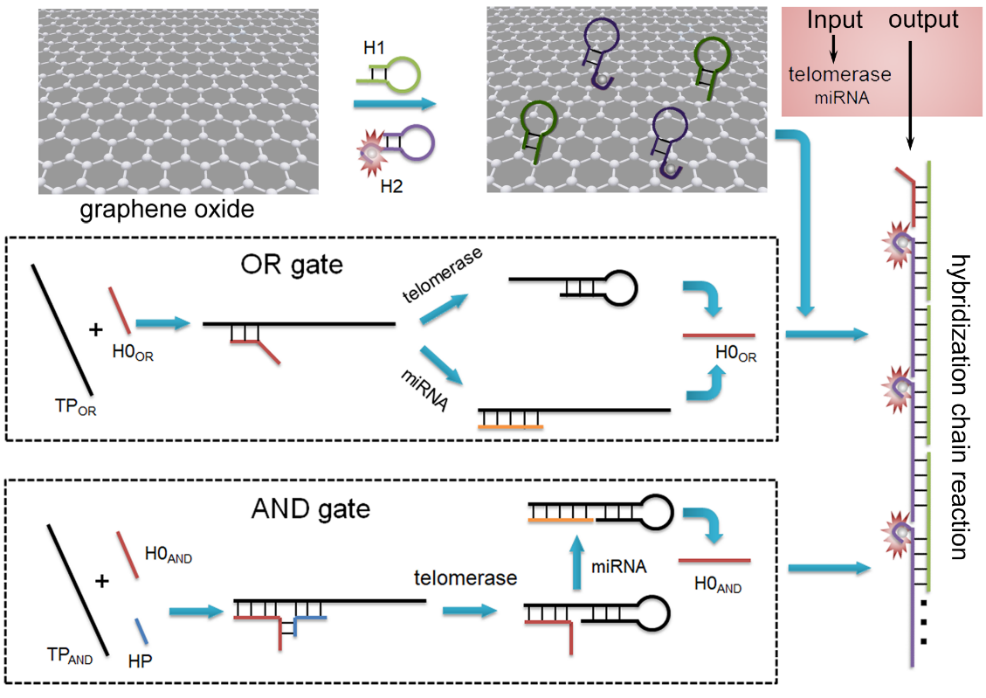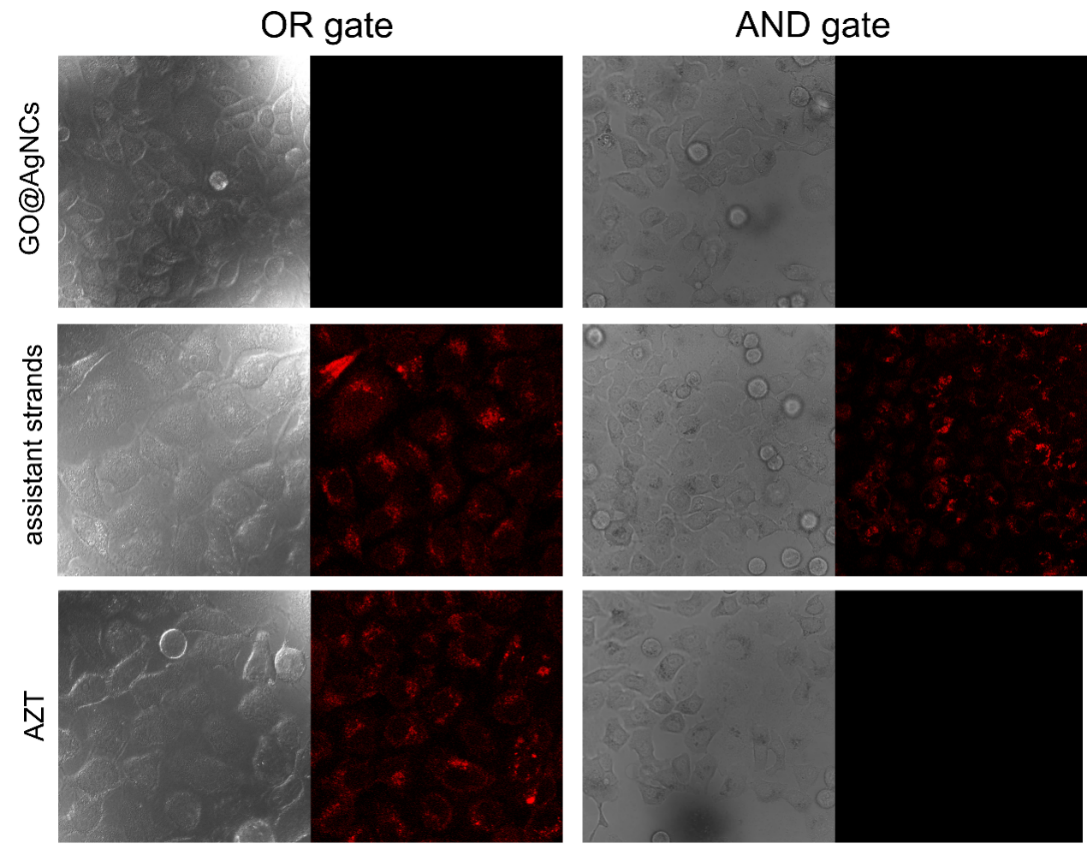Telomerase, a ribonucleoprotein complex with an endogenous RNA template that catalyzes DNA extension, is upregulated in most human cancers and serves as a critical tumor biomarker. Besides, abnormal expression of specific miRNA is also associated with cancers. Therefore, a combined analysis of telomerase and miRNA might be of great use for clinical diagnosis, biomedical studies, and anti-cancer drug screening. Common methods for detecting these biomarkers are telomeric repeat amplification protocol (TRAP) and quantitative reverse transcriptase-polymerase chain reaction (qRT-PCR). However, the two techniques cannot be simply integrated. Until now, several attempts have been made including the development of colorimetric, nanopore-based, electrochemical and fluorescent biosensors. To achieve multiplex analysis and high sensitivity, great challenges still exist.
Recently, MIAO Peng’s group at Suzhou Institute of Biomedical Engineering and Technology (SIBET) has proposed novel fluorescent logic gates for simultaneous analysis of telomerase activity and miRNA. In this research, two hairpin-structured probes H1 and H2 are designed as fuel strands for the hybridization chain reaction (HCR). Since the 3’ terminal of H2 contains a template sequence, silver nanoclusters (AgNCs) are synthesized after introducing Ag+ and a reducing reagent, which emit fluorescence as an output. H1 and H2 are previously adsorbed on the surface of graphene oxide (GO) via the π–π stacking interaction. The red emission of AgNCs is initially quenched by GO through fluorescence resonance energy transfer. In addition, H0OR and H0AND sequences are involved in the logic operation of the OR gate and AND gate, respectively. Both contain the sequences which can trigger the HCR between H1 and H2. Upon the successful HCR, the formed long double-stranded product is released from the GO surface, and recovered fluorescence is applied as the output.
The design of the OR gate permits both single and simultaneous detection. The limits of detection for telomerase and miRNA are 2 cells and 2.8 pM, respectively. The AND gate is then developed, which gives a true output only in the presence of both telomerase and miRNA. Moreover, in situ intracellular imaging is achieved by the transfection of these sensing elements via GO. These logic gates possess the advantages of low cost, simple operation, high sensitivity and selectivity, and have great potential in improving the accuracy of the clinical diagnosis of cancers.
This paper entitled “Construction of fluorescence logic gates responding to telomerase and miRNA based on DNA-templated silver nanoclusters and the hybridization chain reaction” has been published (Nanoscale, 2022, 14, 612–616).

Figure 1. Illustration of the AgNCs and HCR-based logic gates responding to miRNA and telomerase. (Image by SIBET)

Figure 2. Confocal images of the fabricated OR and AND logic gates for the imaging of HeLa cells after adding GO@AgNCs, assistant strands, and AZT in succession. (Image by SIBET)
Contact
XIAO Xintong
Suzhou Institute of Biomedical Engineering and Technology, Chinese Academy of Sciences (http://www.sibet.cas.cn/)
Phone: 86-512-69588013
E-mail: xiaoxt@sibet.ac.cn